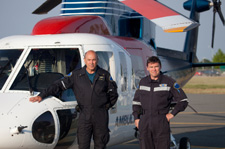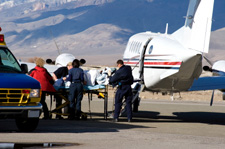 It’s no secret that EMS Helicopter Operations play a vital role in saving lives that might otherwise be lost.
It’s no secret that EMS Helicopter Operations play a vital role in saving lives that might otherwise be lost.
It’s also increasingly clear that EMS flights can sometimes be a risky business for operators, paramedics, the communities and states they serve. In fact, 2008 proved to be the deadliest ever for helicopter crashes with incoming 2009 statistics still discouraging.
According to the NTSB “These operations comprise an estimated 750 helicopters, 70 commercial operators, 60 hospital-based programs, and 40 government-operated, or what is known as “public operations.”
Due to increased need versus safety concerns, operators, associations, state EMS councils, the NTSB and FAA are all actively seeking solutions that increase Helicopter Medevac Safety in a uniform and comprehensive way.
 Among the real safety concerns in EMS Air Transport is the practice called “Helicopter Shopping,” a problem that arises when HEMS teams are not made aware of prior flight turndowns for the same transport request.
Among the real safety concerns in EMS Air Transport is the practice called “Helicopter Shopping,” a problem that arises when HEMS teams are not made aware of prior flight turndowns for the same transport request.
The National Transportation Safety Board has recognized it as an important concern, as have the FAA, numerous state, regional and national organizations.
Even under the best circumstances with strong weather reporting systems there is no substitute for an eye witness account of actual weather conditions at a specific moment in time.
MedEvac WeatherSAFE helps resolve this issue with a national web-based 24-7 system that allows local, regional state and other organizations to share and immediately alert their members of a turn-down. There is no local server or software to install. The refusing member enters the pertinent data for the turndown which immediate sends a desktop alert to other designated HEMS teams.